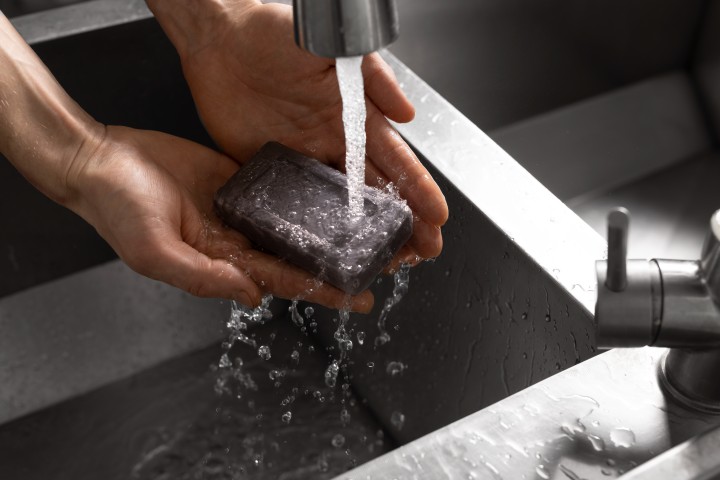A common household plumbing problem is low water pressure. This can be very frustrating as showers take longer, the washing machine takes longer to fill up, and similar issues with your toilets and sinks. While low water pressure can stem from one or more causes, you may or may not require a plumber to fix it. It is important, however, to identify the cause and remedy the issue in the long term.
Here is how to solve low water pressure in a house. Let’s get that water flowing again!

Determine Where the Leak Is
To fix low water pressure, you must investigate where it’s happening. Check if it’s just one faucet or throughout the home. Check every appliance, faucet, and toilet to see if the water pressure is consistent.
If you’re only having issues with a specific faucet, you may need to clean or replace it. Regular use of a faucet or showerhead can accumulate limestone, sediment, or rust that interferes with water flow. Clean out the filter or aerator on the fixture to see if that works. If not, replace it.
Check the Main Water Valve
A low water pressure issue throughout your home may indicate that the main water valve is only partially open. If this is the cause, that is excellent! All you have to do is fully open the main water valve. This is usually just below the water meter or near the exterior wall where water enters your home.
If recent work was performed on your home or you’ve never checked this valve, this may be the sole cause of your low water pressure.
Clear Your Pipes
Clogged pipes are the most likely cause of low water pressure in many homes. This is often caused by mineral deposits that have built up over time. Even a small clog can reduce the water pressure in a house. This clog worsens slowly over time.
The most effective way to clear a clog depends on where it lies. It’s more complicated than squeezing it out or sending a drain snake down your pipe. If you’ve tried these methods and they don’t work, consult a professional service like Birnie Plumbing.
Install a Booster
A water pressure booster uses an electric pump and pressure tank to increase the water pressure in a house. They’re used when a lack of water pressure is caused by the water supply not keeping up with demand. This is like when too many people in the house consume water simultaneously.
While this shouldn’t impact water pressure, it can impact certain homes with older plumbing. While your plumbing system is already doing what it can to get water in, a water pressure booster will do the rest. This will help you get the water pressure you want.
Corrosion in Your Plumbing
A house for decades may have corroded pipes. Corrosion occurs in galvanized steel pipes after roughly 20 years, brass pipes after 40-70 years, and copper pipes at the 50-year mark.
The likelihood of corrosion increases if more plumbing fixtures are installed after the property is built, which means your plumbing has to work harder. It’s key to contact a plumber if low water pressure is corrosion-related, as not fixing it can lead to cracks, leaks, and water damage.
A Leaky Pipe
A leak in your water line or pipes, even a small leak, can cause water to exit into other areas before reaching your faucet. The presence of water in your basement or foundation is a clear indication that your plumbing is leaking. You can check this by shutting off all taps.
Take a meter reading, wait two hours, and take it again. An increase in your meter could mean a leak. Search for any pooling water or wet spots around your property.
Video drain inspections will be required to diagnose leaks. After they are found, permanent seals can be installed, or severely damaged pipes can be replaced.
Replace Your Pressure Regulator
Some homes have pressure regulators. This control valve ensures water pressure is kept within safe parameters, such as keeping water pressure flowing at 50 psi. This is good for your plumbing, as excessive water pressure can damage and stress your appliances.
A pressure regulator, however, can fail and malfunction, often due to sediment buildup. If your regulator is faulty, it must be located, tested with a pressure gauge, and likely replaced. This is another potential remedy for low water pressure.
Check Your Hot Water Tank
Are you experiencing low water pressure for hot and cold? Look around your hot water tank for leaks or signs of mineral deposit buildup. With hard water, buildup can happen anywhere in your plumbing, including the water heater. This will keep your valves sealed properly, resulting in leaks.
To clear the buildup and test this theory, open and close the valve several times, then wait a few hours to see if the water pressure issue has been resolved.
We hope you found this blog post on How To Solve Low Water Pressure In A House, useful. Be sure to check out our post on Water Damage Should Be Cleaned by Certified Professionals for more great tips!
Have Experience in the Moving Industry? Want an Additional Income Stream? Work With All Around Moving!
Find out how working with us can help you profit. Click here to learn more.





